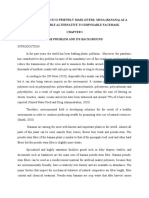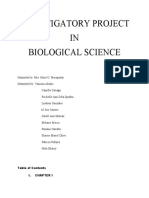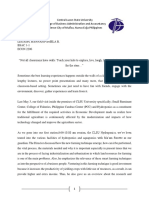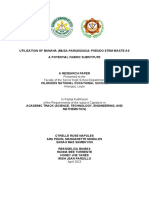83% found this document useful (12 votes)
10K views3 pagesThe Effectiveness of Dried Carabao Manure
The document discusses an experimental study on using dried carabao manure with calamansi extract as an alternative insect repellent. It aims to determine the effectiveness of calamansi extract as a natural and cheaper alternative to commercial insect repellents. The study seeks to answer how long the natural repellent remains effective in killing insects. If shown to work, this could help address financial burdens and environmental pollution from widespread chemical insecticide use.
Uploaded by
trizyeeeuhCopyright
© Attribution Non-Commercial (BY-NC)
We take content rights seriously. If you suspect this is your content, claim it here.
Available Formats
Download as DOCX, PDF, TXT or read online on Scribd
83% found this document useful (12 votes)
10K views3 pagesThe Effectiveness of Dried Carabao Manure
The document discusses an experimental study on using dried carabao manure with calamansi extract as an alternative insect repellent. It aims to determine the effectiveness of calamansi extract as a natural and cheaper alternative to commercial insect repellents. The study seeks to answer how long the natural repellent remains effective in killing insects. If shown to work, this could help address financial burdens and environmental pollution from widespread chemical insecticide use.
Uploaded by
trizyeeeuhCopyright
© Attribution Non-Commercial (BY-NC)
We take content rights seriously. If you suspect this is your content, claim it here.
Available Formats
Download as DOCX, PDF, TXT or read online on Scribd
/ 3



























































